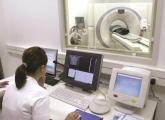News

Medicare has announced a proposal to cover low-dose computed tomography screens for patients at high risk for lung cancer.
“The evidence is sufficient to add a lung cancer screening counseling and shared decision making visit, and for appropriate beneficiaries, screening for lung cancer with low-dose computed tomography, once per year, as an additional preventive service benefit under the Medicare program,” officials from the Centers for Medicare & Medicaid Services wrote in the proposed national coverage decision, which was announced Nov. 10.
The proposed coverage decision was made despite the Medicare Evidence Development and Coverage Advisory Commission recommendation earlier this year that opposed covering LDCT screening. More recently, however, a study has found LDCT screening to be cost effective for patients at high risk for lung cancer (N. Engl. J Med. 2014;371:1793-802 [doi:10.1056/NEJMoa1312547]).
Based on the proposal, appropriate candidates for screening would be 55-74 years old, show no signs of lung disease, and have a smoking history of at least 30 pack-years. Further, appropriate patients would be either current smokers or would have quit within the past 15 years.
Another stipulation of the proposal is the requirement for a physician or qualified non-physician practitioner to schedule a visit for counseling and shared decision making with patients before issuing a written order for LDCT screening.
The time requirement and questions about how this counseling would be covered makes the counseling visit “one of the most interesting things in the Medicare requirement,” said Steven Zeliadt, Ph.D., core investigator at VA Health Services Research & Development Services and professor at the University of Washington in Seattle. “That’s very different than other cancer screening tests, and for Medicare to really be encouraging and requiring that is something providers and systems are going to (need to) figure out.”
As a result of the counseling requirement and standards of expectation for centers performing screening LDCT, specialized centers are likely to gain traction and manage the bulk of these patients, Dr. Zeliadt said.
These will be the places that integrate both parts of the screening by conducting the LDCT test as well as providing the counseling. This differs from the model used for colon cancer and prostate cancer screening, where test results are sent to the physician so that he or she can counsel the patient.
Such centers exist now, he noted. “They hire counselors and [conduct] an hour-long pre-screening visit.”
That model doesn’t easily fit into an office-based setting and does not take advantage of the physician/patient relationship, he added. “There is an opportunity for a familiar provider to engage patients around counseling, so (moving the screening to a center) takes away from the long-term relationship,” including knowing more deeply each patient’s risks and history with smoking and attempts to quit.
It also may detract from opportunities to maintain conversations about smoking cessation, and the need to quit as patients may “feel protected by screening.”
CMS is soliticing comments on the proposed national coverage decision until Dec. 10.
The determination of eligibility for LDCT screening will depend on age, absence of signs or symptoms of lung disease, a specific calculation of cigarette smoking pack-years; and if a former smoker, the number of years since quitting. Shared decision making, including the use of one or more decision aids, needs to include the benefits, harms, follow-up diagnostic testing, over-diagnosis, false positive rate, and total radiation exposure.
Counseling must address the importance of adherence to annual LDCT lung cancer screening, the impact of comorbidities, and the ability or willingness to undergo diagnosis and treatment. Also, counseling needs to include the importance of maintaining cigarette smoking abstinence among former smokers and a plan for smoking cessation in current smokers and, if appropriate, offering additional Medicare-covered tobacco cessation counseling services.
Written orders for both initial and subsequent LDCT lung cancer screenings must be documented in the beneficiaries’ medical records and include patient date of birth, pack-year smoking history, and current smoking status or the number of years since quitting smoking. The order must also include a statement that the beneficiary is asymptomatic; and the NPI of the ordering practitioner.
To be eligible to perform the screening, radiologists must be board certified and involved in the supervision and interpretation of at least 300 chest CT acquisitions in the past 3 years.
Medicare-eligible centers for lung cancer LDCT screening must have participated in past lung cancer screening trials, such as the National Lung Screening Trial or be an accredited advanced diagnostic imaging center with training and experience in LDCT lung cancer screening. They must use LDCTs with an effective radiation dose less than 1.5 mSv, and they must collect and submit data to a CMS-approved national registry for each LDCT lung cancer screening performed.



